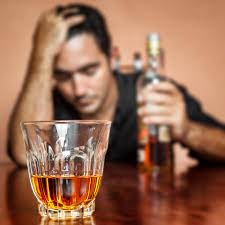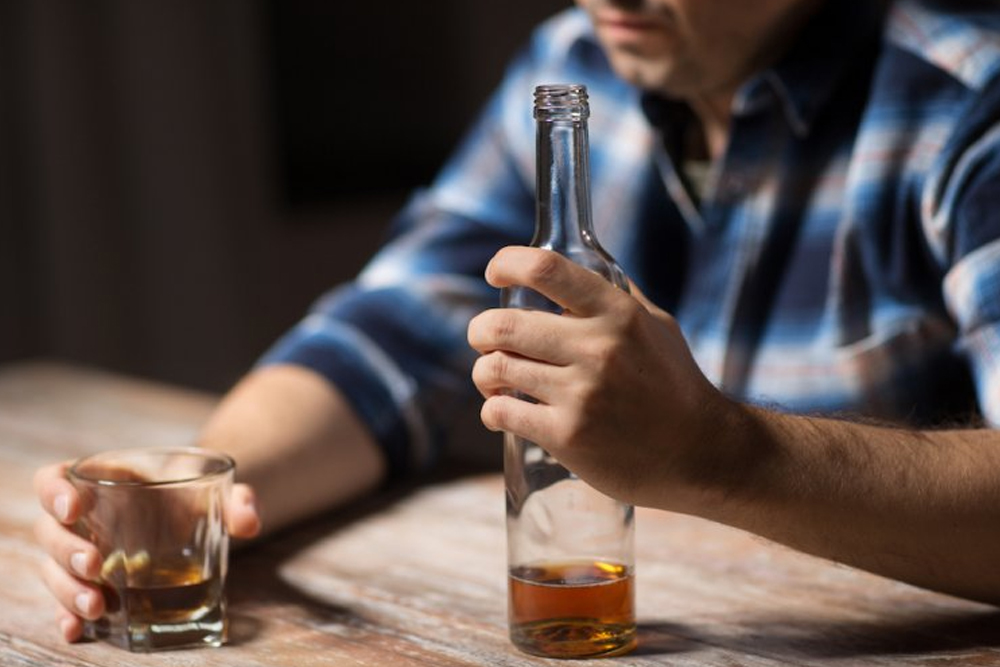Alcohol is a legal substance that is found in many popular drinks like beer, wine, whiskey, vodka, and many others. When taken moderately, alcohol has very few ill effects on your body. But when you abuse alcohol, it becomes addictive and damaging to your brain and body.
If you drink heavily, and you have had this habit for a long time, you will most likely experience alcohol withdrawal when you try to cut back on drinking.
Here are the symptoms and causes of this condition.
Why does alcohol withdrawal happen?
 Alcohol is known as a depressant. In other words, it slows down the functions in your brain as well as changing how neurons (brain cells) send messages to each other. Because of these, you feel relaxed and less stressed after drinking.
Alcohol is known as a depressant. In other words, it slows down the functions in your brain as well as changing how neurons (brain cells) send messages to each other. Because of these, you feel relaxed and less stressed after drinking.
Specifically, alcohol alters the functions of GABA receptors and glutamate receptors in the brain. GABA (gamma aminobutyric acid) is a brain chemical involved in excitatory signals, while glutamate is involved in inhibitory signals. When alcohol exerts its effects on these receptors, the result is the feelings of relaxation and decreased anxiety.
If you drink regularly, your brain and nervous system will get used to the effects of alcohol over time. Consequently, your brain needs to exert more effort to “stay awake” and keep the neurons communicating with each other. To achieve this, the brain reduces the release of GABA while increasing that of glutamate. Later on, your brain will get used to this effect, increasing your tolerance for alcohol.
When you drink less or try to stop drinking, your brain is still in this same “hyper-aroused” state. Without the depressive effects of alcohol, withdrawal symptoms develop.
What are the symptoms of alcohol withdrawal?
Withdrawal symptoms vary from person to person. The common ones include:
- Sweating
- Shaky hands
- Headache
- Vomiting
- Nausea
- Insomnia
- Anxiety
- Hallucinations
In about five percent of people suffering from withdrawal from alcohol, they develop a severe form of the condition called delirium tremens or DTs. This can become fatal, and its symptoms include:
- Agitation
- Aggression
- Irritability
- Confusion
- Vomiting
- Nausea
- Trembling
- Sweating
- Tachycardia (heart rate of more than 100 beats per minute)
- Tremors
- Seizures
- Visual, auditory, or tactile hallucinations
- Impaired consciousness
When do the withdrawal symptoms start?
 The first withdrawal symptoms can show up as early as 6 hours after your last drink. These symptoms are usually mild, such as headaches, shaky hands, and sweating. You may also experience nausea and vomiting at this point, as well as some anxiety.
The first withdrawal symptoms can show up as early as 6 hours after your last drink. These symptoms are usually mild, such as headaches, shaky hands, and sweating. You may also experience nausea and vomiting at this point, as well as some anxiety.
After about 12 to 48 hours, you may begin to hallucinate. You can also be prone to seizures at this time frame.
Although rare, it is possible that your withdrawal will turn into DTs after 48 to 72 hours from your last drink. When you experience DTs, consider it a serious emergency. Call for medical help right away.
DTs often last for 3 to 4 days, but in some cases can extend to 8 days. One important thing to note is even if you receive medical attention for DTs symptoms, they may still progress afterwards. You may still experience DTs in the future, especially if you continue to drink.
How do I avoid these withdrawal symptoms?
The only certain way to avoid alcohol withdrawal is to abstain from alcohol altogether. If you do not drink, there will be no alcohol to disrupt your brain.
But if you can’t help it, drinking moderately helps a lot. Based on the American Dietary Guidelines, moderate drinking is taking not more than 2 drinks per day for men and not more than 1 drink per day for women.
The Guidelines define one drink as:
- 12 oz of beer (5% alcohol)
- 5 oz of wine (12% alcohol)
- 5 oz of hard liquor (40% alcohol)
If you avoid drinking more than one (for women) or two (for men) of these per day, you are much less likely to experience withdrawal symptoms. Drinking only small amounts of alcohol gives your liver more time to clear out the substance from your body. With that, you will not experience the ill effects of alcohol.
Better yet, avoid drinking daily as much as you can. Limit your alcohol intake to once a week or less.
Also, always avoid binge drinking, which is defined as consuming 5 or more drinks in 2 hours for men, or 4 or more drinks in 2 hours for women. Taking this much alcohol in such a short time will raise your blood alcohol concentration to 0.08% or higher, which is highly dangerous. Binge drinking is a huge risk factor for alcohol withdrawal.
When should I seek help?
 The first sign that you need professional help is if you can no longer control the amount of alcohol you drink. If you regularly catch yourself drinking more than you planned, it may be time to get help for alcohol use disorder.
The first sign that you need professional help is if you can no longer control the amount of alcohol you drink. If you regularly catch yourself drinking more than you planned, it may be time to get help for alcohol use disorder.
Trying to quit alcohol on your own is quite challenging. The moment you cut back on drinking, the discomfort you feel when withdrawal kicks in may compel you to just keep drinking to make the symptoms go away.
The best way to stop drinking is with professional help. Enrolling in a rehab program gives you the best treatments to help you become alcohol-free.
One of the important aspects of rehab is medically-assisted detox. Here, doctors will assist you in decreasing your intake of alcohol while managing withdrawal. At the end of detox, you will be able to tolerate drinking no alcohol at all.
After detox, you will go through a series of behavioral therapies. The goal of these is to deal with the mental side effects of your alcohol addiction. These therapies will give you the skills you need to avoid alcohol on your own.
Alcohol rehab may take a few months, but in the end, the time and effort you spend in rehab will be worth it. Nothing beats the freedom of living a life without the influence of alcohol.
